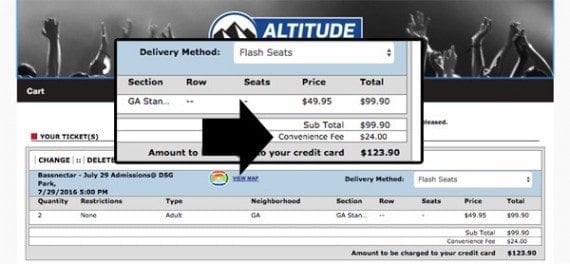
Listrak, the email service provider, is one of many companies that track shopping cart abandonment rates. On average, roughly 70 percent of online shopping carts are abandoned, possibly resulting in lost sales.
The Internet is full of window shoppers. They look at products on virtual shelves, but most leave without buying anything, or at least that it what years of shopping cart abandonment data seems to indicate.
The analogy between window shopping and shopping cart abandonment is imperfect. If the majority of shoppers in a physical store, walked in, loaded various items into a cart, pushed the cart to the register, and then left, the store manager would be justifiably alarmed.
Nonetheless this happens in online stores all of the time. In fact, depending on which study or survey one trusts, something like 70 percent of online shopping carts are simply abandoned.
In January 2016, the Baymard Institute published a list of 33 shopping cart abandonment rates from leading sources. The list included cart abandonment rates from 2006 through 2015. The lowest reported rate came from a 2010 Forrester Research and Shop.org survey, which put the figure at 55 percent. The highest reported rate was 80.3 percent from a 2012 survey from Rejoiner, an email service company.
Unexpected Costs Are Top Cause
There are certainly a number of reasons online shoppers have for abandoning seven in every 10 ecommerce shopping carts. The most prominent cause, according to Statista, an aggregator of studies and statistics, is that shoppers encounter something they did not expect. More specifically, 56 percent of shoppers abandon shopping carts when they encounter unexpected costs.

Statista reports that 56 percent of shoppers surveyed abandon a shopping cart because they encounter an unexpected cost. Click graphic to enlarge.
Thus, it would seem if online stores could take the “unexpected” out of the shopping cart, abandonment rates would fall by half. Two-thirds of shoppers would complete the purchase process instead of just one-third, and online stores would double their sales.
Admittedly, this is overly optimistic. If all unexpected costs were eliminated from ecommerce checkout processes everywhere, there would still be other issues to contend with. In addition, some percentage of shoppers who abandon their digital shopping cart will eventually return to reclaim it. Not every abandoned cart is a lost sale. So instead of doubling sales, online retail sites that removed every “unexpected” cost would likely enjoy a more humble increase in conversions.
Even a humble increase in ecommerce conversions can, however, have a significant impact on sales.
To address shopping cart abandonment’s top cause, unexpected charges, online retailers must first identify those charges. What showed up at checkout that the shopper had not anticipated?
While this will differ from retailer to retailer, we can identify three categories of unexpected charges:
- Higher than expected shipping charges;
- Unanticipated processing fees or taxes;
- Automatic cross-sells.
Don’t Use Automatic Cross-selling
Taking these from the least common to the most common, automatic cross-selling describes the practice of adding related items to a checkout, so that shoppers will need to opt-out of or take some action to remove the items from the cart.
A March 2016 cart abandonment article from KlientBoost, a marketing and design firm, described a Cincinnati-based florist’s website. When the author tried to purchase a bouquet for a friend in the area, the site added an unexpected “enclosure card” and charged $3.99. The author could have clicked a red “x” to remove this automatic cross-sell, but, instead, looked for a different florist.
No doubt selling a 15-cent card for $3.99 will boost your margin, but this tactic might also boost your cart abandonment rate, and should be categorically avoided. Simply put, do not add items to the cart without express permission.
Avoid Unanticipated Fees and Taxes
Unanticipated processing fees and taxes can take a few forms. For example, anyone who has ever purchased event tickets, booked a hotel, or purchased a vacation package online has likely been hit up for an order processing fee or similar.
If you wanted to purchase two tickets to the Bassnectar concert on Friday, July 29, 2016, in Commerce City, Colo., you would have to pay $49.95 each for general admission tickets, plus a $24.00 convenience fee. I’m not certain what makes this fee convenient or whom it was convenient for, but it seems like a lot of money for nothing. Moreover, if you wanted a physical ticket, instead of a downloadable PDF, you would pay $5.00 for that

Ticket sellers often include “convenience” or “processing” fees that unexpectedly drive up costs.
From the perspective of reducing shopping cart abandonment, it may be better to eliminate these sorts of fees altogether and simply show the shopper the complete total on the product detail page and on product category pages. Instead of showing a $49.95 ticket price and later adding $12.00, show the full price of $61.95 per ticket and remove the unexpected.
In the ticket example below, the site did at least warn the shopper that fees were coming.

Warning: Fees ahead. Will they be “convenient”?
Charging sales tax is unavoidable, but, still, don’t surprise the shoppers. If possible, show the tax rate on the product detail page before the shopper adds an item to the cart.
Set Proper Expectation for Shipping Charges
The most common form of unexpected cost driving ecommerce shopping cart abandonment has to do with shipping. Many online shoppers expect shipping to be free all the time. Meeting this expectation will eliminate the single greatest factor contributing to shopping cart abandonment.
Free shipping policies can improve conversion rates, too. So if it makes sense for your business, simply offer free shipping. Wayfair, as an example, offers free shipping on essentially everything on the site, including kitchen ranges, which are awkward and heavy.

Wayfair offers free shipping on even hard-to-ship items.
If you must charge for shipping, provide a shipping estimate or calculator on the product detail page or the product category page, so shoppers have a good idea of what the item will ultimately cost.
Amazon, which benefits from requiring shopper registration, does a masterful job of this. Most items on the site include some form of free shipping, but when free shipping is not an option, Amazon includes a precise shipping estimate, taking the unexpected out of shopping.

Amazon does a masterful job of setting shipping expectations.
Remove Unexpected Costs
Give shoppers a clear idea of cost before the checkout, and you should reduce your store’s shopping cart abandonment rate and earn more conversions, sales, and profit. Don’t automatically add items to a shopper’s cart, avoid fees, and make shipping charges clear.




